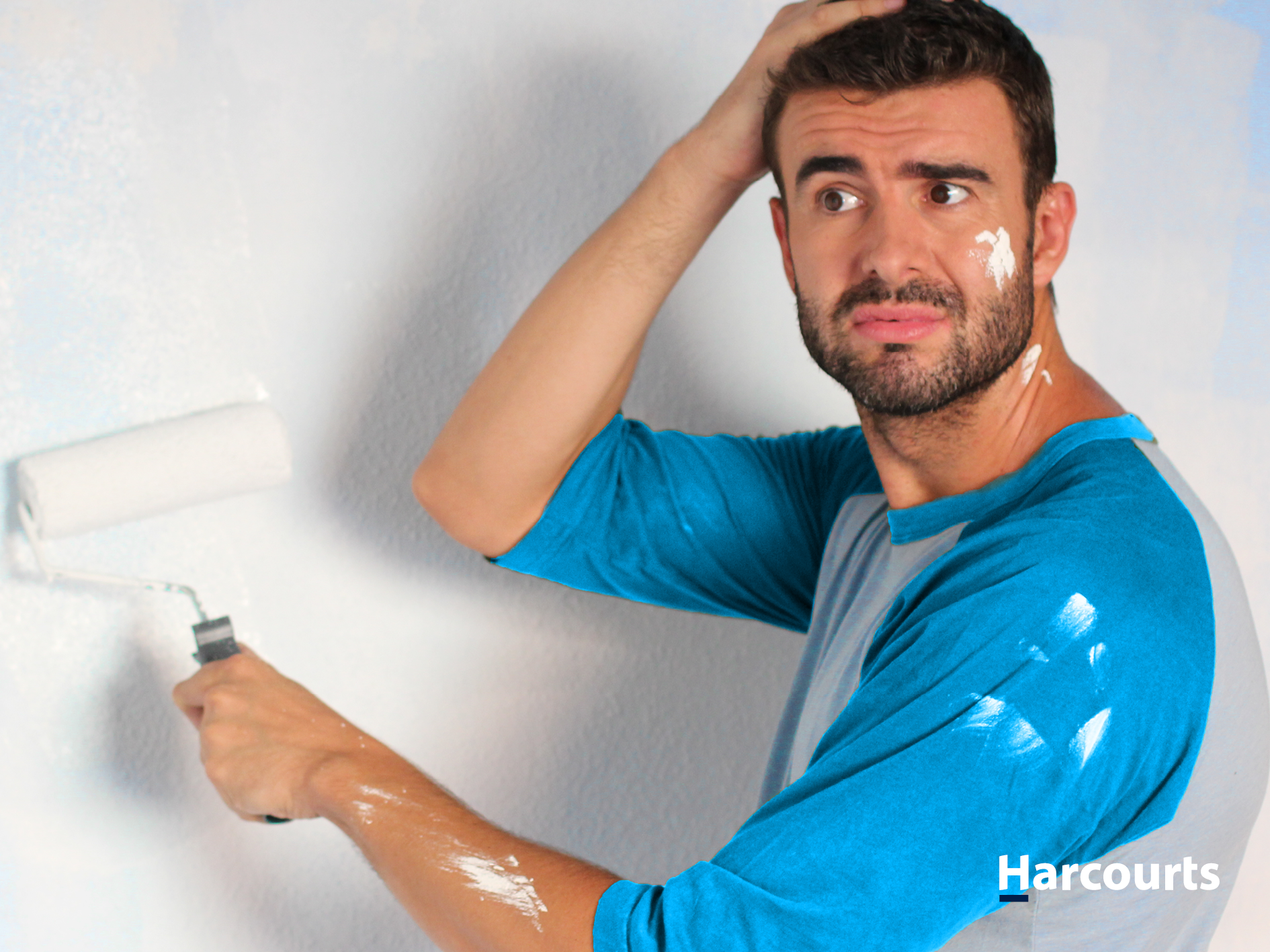Prepare your substrate properly. We can’t stress the importance of this step enough. Cracks, peeling or flaking areas must be sanded, scraped or smoothed prior to applying new primer and paint. Otherwise, the thicker, heavier new coat will end up pulling the old paint off the wall and you’ll have wasted the money you spent on your new paint as well as your time.
Protect surfaces. Time spent covering furniture, cornices, door handles or other areas you don’t want painted is time well spent. Plastic sheets, drop cloths and plastic packets are your friends. Remember to remove light switch covers, as well.
Be mindful of the climate. Humidity is no one’s friend, especially when painting. If you live in a province like Durban, you’ll need to be extra mindful of when you get started. Of course, you don’t always have a choice. If you need to paint during a humid period, be sure to take it slow. Make use of slow-drying paint so that you can correct any errors before your next coat. Just make sure you don’t lay down too many coats or the finished surface will look sloppy.
Buy quality tools. High-quality utensils make all the difference. If you’re buying a high-quality paint, don’t cut costs with your brushes and rollers, lest you end up using more paint than you need by re-applying. Good painter’s tape is another essential you can’t forget!
Analyse your surface and know how much paint you’ll need to coat your roller with. Heavily textured walls like concrete will require more paint on your roller, while smoother walls with little texture will end up appearing as though you’ve created a texture you don’t want if you use too much.
A clean and smooth surface will benefit from a paint-primer product, but a separate primer and paint is always the best bet. Use bonding primers for surfaces like glass or previously high-gloss areas.
Work your way down. Apply paint from the ceiling downward. You can always tell a surface painted by an amateur by the drip marks, splatters and inconsistent strokes. Paint over your mistakes as you work your way down. Leave an area alone once it’s started to dry, otherwise you’ll end up with unsightly marks and colour streaks.
Miguel Pelati, Harcourts South Africa

